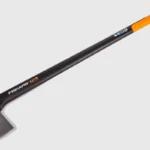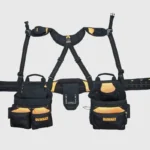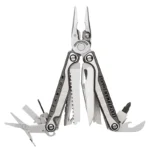Maintaining hand tools is not just about keeping them functional; it’s about extending their life, ensuring safety, and enhancing their performance. Proper care prevents tools from deteriorating and failing prematurely, which can be costly and dangerous.
This guide will cover everything from basic cleaning to specific maintenance techniques to keep your tools in top shape.
Regular Cleaning
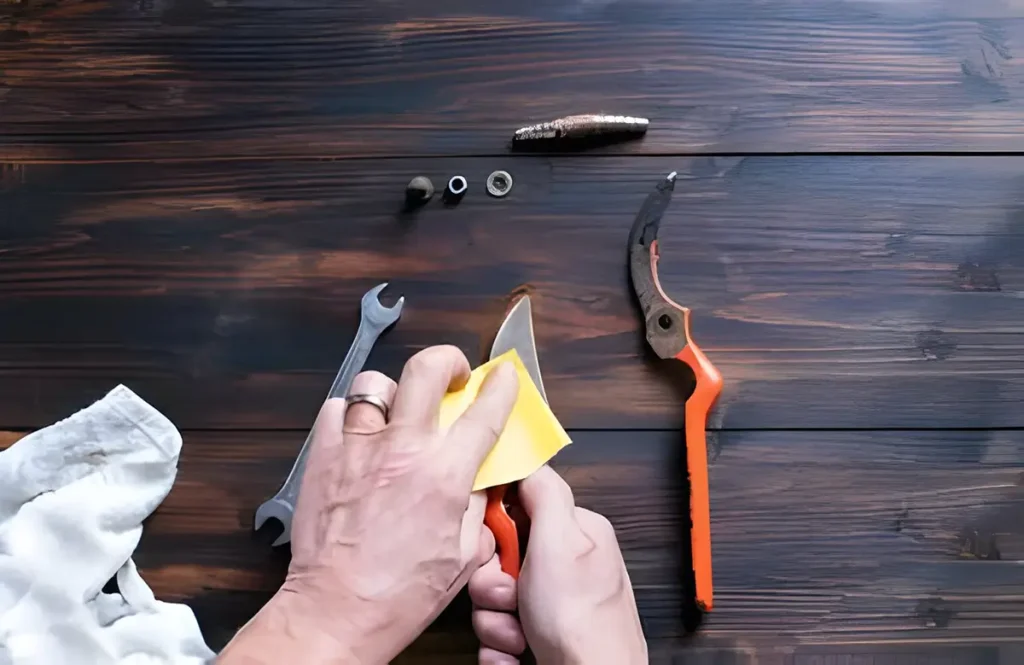
Initial Cleaning
After each use, tools should be wiped down to remove debris, dust, and any moisture they have been exposed to. This simple step prevents the buildup of grime and corrosive substances which can degrade tool quality over time.
Deep Cleaning
Every few months, a more thorough cleaning is necessary, especially for tools that are used frequently or exposed to harsh conditions. Use a wire brush to scrub away rust on metal parts. Solvents such as mineral spirits can be used to remove oily residues, and a simple mixture of soap and water can clean off most dirt. Ensure all tools are completely dry before storing them to avoid rust.
Special Considerations for Metal Parts
Metal components require additional care. After cleaning, applying a light coat of machine oil or a silicone-based lubricant can prevent rust and corrosion. For tools that are already rusted, products like WD-40 or rust remover can be applied. Let the product sit for the recommended time before scrubbing off the rust gently with steel wool.
Proper Storage
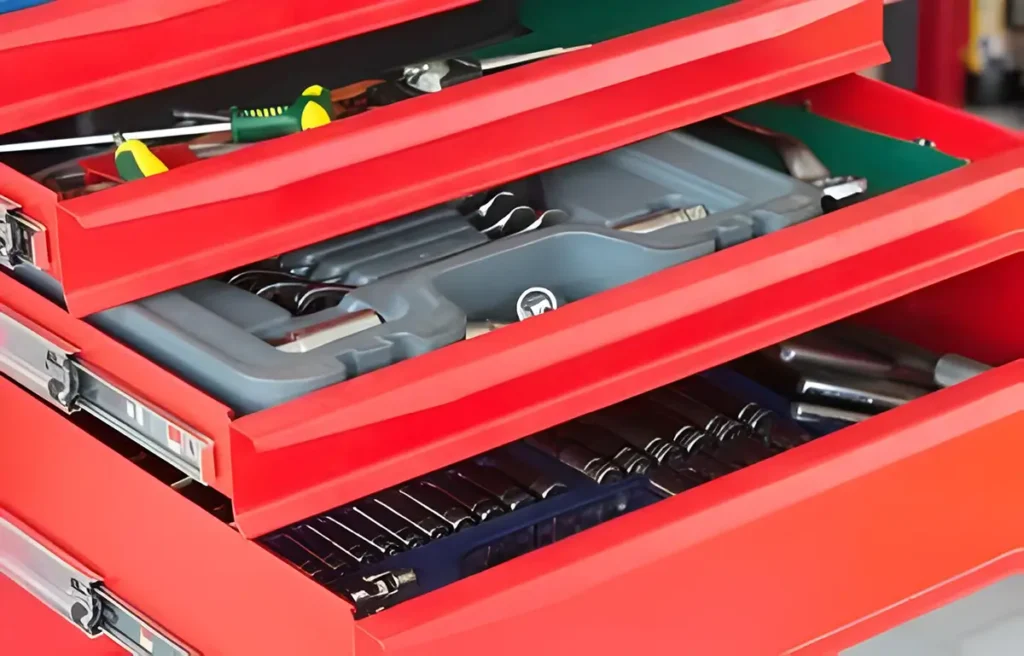
Moisture Control
The primary enemy of most hand tools is moisture. Storing tools in a dry place is essential to prevent rusting. Use silica gel packs in your toolbox to absorb any excess humidity. If your storage area is prone to dampness, a dehumidifier can help maintain an optimal environment.
Organizational Tips
Good organization not only saves time but also prevents tools from getting damaged. Pegboards, tool chests with lined drawers, or custom-made holders can keep tools secure and in place. Make sure that sharp tools like chisels are stored with their edges protected to prevent them from becoming dull.
Tool-specific Storage Advice
Not all tools are created equal when it comes to storage:
- Saws: Hang saws vertically on pegs away from other tools to prevent their teeth from getting bent or dull.
- Hammers: Store hammers with their heads down to avoid putting stress on the handles.
- Screwdrivers: Keep them in a rack or a drawer with dividers to prevent them from rolling around and damaging their tips.
Regular Maintenance
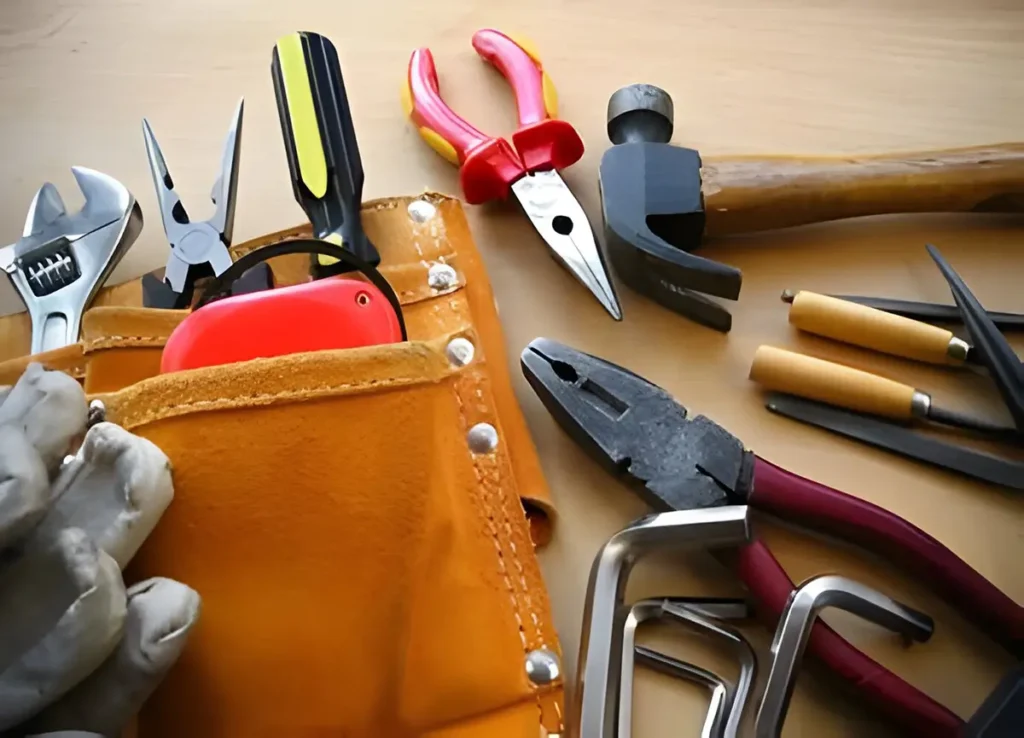
Inspection Routines
Regularly inspect your tools for signs of wear or damage. Check for cracks in handles, rust on metal parts, and ensure that moving parts are operating smoothly. This routine can help you catch issues before they lead to tool failure.
Sharpening Techniques
Keeping cutting tools sharp not only makes your tasks easier but also safer. Use a whetstone or sharpening steel for knives and chisels. Files and honing guides can maintain the edge of larger tools like axes. Always follow the tool manufacturer’s guidance for angle and technique.
Lubrication
Proper lubrication reduces friction and wear on moving parts. Apply light machine oil to hinges, screws, and any other metal components that pivot or slide. For tools like pliers and screwdrivers, periodically apply a drop of oil to the joints. Wipe away any excess to prevent dirt accumulation.
Handling and Usage
Proper handling and usage of hand tools are crucial for their longevity and effectiveness. Misusing tools not only causes them to wear out faster but can also pose a safety risk.
Each tool is designed for specific tasks. Using a screwdriver as a chisel, for example, can damage the tool and potentially cause injury. Always use the right tool for the job and follow the manufacturer’s instructions to ensure you are using it correctly. This ensures that the tool can do its job effectively without risk of damage or personal injury.
Hand tools should always be used with safety in mind. Wear appropriate personal protective equipment like gloves, goggles, or hearing protection depending on the tool and the task. Ensure that the work area is well-lit and that you are using tools within their operational limits. For instance, do not apply excessive force to a wrench with an extension pipe unless it is rated to handle the increased torque.
Repairing Damaged Tools
Sometimes, despite best efforts, tools can get damaged. Knowing how to repair them can save money and extend their life.
Handle Replacement: Many tools, such as hammers and axes, may require handle replacements. Choose a handle that matches the original in size and shape. Remove the old handle by sawing off the remaining part and drilling out the wood inside the tool’s head. Fit the new handle into the head, secure it with epoxy, and wedge it to ensure it is tight and secure.
Fixing Loose Heads: On tools like hammers, a loose head can be dangerous. Tighten the head by ensuring the handle’s wedge is intact and adding a new metal wedge if necessary. This prevents the head from flying off during use.
Rust Treatment: For rusted tools, use a wire brush or sandpaper to remove as much rust as possible, then soak the tool in a rust remover solution or white vinegar for severe cases. Once the rust is removed, apply a rust inhibitor and polish the tool with a protective oil to prevent future rust.
Specialty Tool Care
Beyond the basics, certain tools require special attention to keep them in the best working condition.
- Power Tools: Power tools should be kept clean and dry. Check the electrical components regularly for signs of wear or damage, and store batteries in a cool, dry place to extend their life.
- Precision Instruments: Tools like calipers and micrometers must be kept clean and occasionally calibrated to ensure accuracy. Store them in a padded case to protect delicate parts and clean them with a soft, dry cloth after each use.
Seasonal Tips
Tools often require different care depending on the season due to changes in humidity and temperature.
- Winter Care: Cold and damp conditions can lead to rust and stiff joints in tools. Store tools in a climate-controlled environment and lubricate them more frequently to prevent freezing of moving parts.
- Summer Storage: High humidity can also cause rust. Using moisture-absorbing products in tool storage areas can help prevent this. Ensure tools are cleaned and oiled more frequently during humid months to protect against corrosion.
Maintaining your hand tools with regular care and proper usage not only extends their life but also ensures they remain safe and effective for every project. Implement these practices and see your tools perform reliably job after job. Remember, a well-maintained tool is a dependable tool.

Matthew Dowell
Matthew, a seasoned builder from a family of craftsmen, leads Tools Trove. His passion for tools and decades of hands-on experience fuel his commitment to providing expert reviews and insightful content. Whether you’re a pro or a DIY enthusiast, Matthew’s guidance ensures informed decisions in the world of tools.


